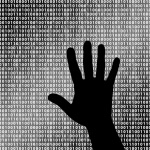The WikiLeaks Incident
In 2010, a disaffected U.S. Army intelligence analyst allegedly copied a large trove of U.S. government documents and sent them to whistleblower
- Sep 06, 2016
- by Entro Themes
Abstract
In 2010, a disaffected U.S. Army intelligence analyst allegedly copied a large trove of U.S. government documents and sent them to whistleblower website WikiLeaks (http://wikileaks.org/). The trove included hundreds of thousands of military documents and embassy cables, many of which were classified. WikiLeaks shared the documents with several major newspapers and then began public distribution at a slow pace designed to drag out the document release for years. The document release resulted in investigations and legal maneuvering, but also caused a cyberspace tiff between WikiLeaks, its critics, and its supporters. Although limited in scope, the incident included a level of interactivity not previously seen: online raids, skirmishes, and reprisals that continued over the course of several months and were widely reported by the news media. This tit-for-tat exchange of cyberattacks distinguishes the WikiLeaks incident from prior leaks, and may offer hints about future conflicts in cyberspace.
This document contains three parts:
1. A list of some individuals and groups involved in the incident;
2. A step-by-step description of the chain of events;
3. Exhibits containing additional background and primary source material related to the incident.
The WikiLeaks Incident is designed to be used as a background document to set the stage for several hypothetical classroom exercises during which students play the roles of various stakeholders. This product includes a separate teaching note with teaching plans and materials for the exercises.
Learning Objectives
- Analyze the government’s reaction to a large amount of classified material being published online.
- Explore ways to respond appropriately to future leaks of sensitive material, from the point of view of various stakeholders, including WikiLeaks (and WikiLeaks-type websites), newspapers and other news outlets, individuals involved (including whistleblowers) and government agencies.
- Discuss ways in which the Internet has changed whistleblowing activity, and the legal ramifications of these changes.
Subjects Covered
Cyberlaw, Government Law, Criminal Law, International Law


